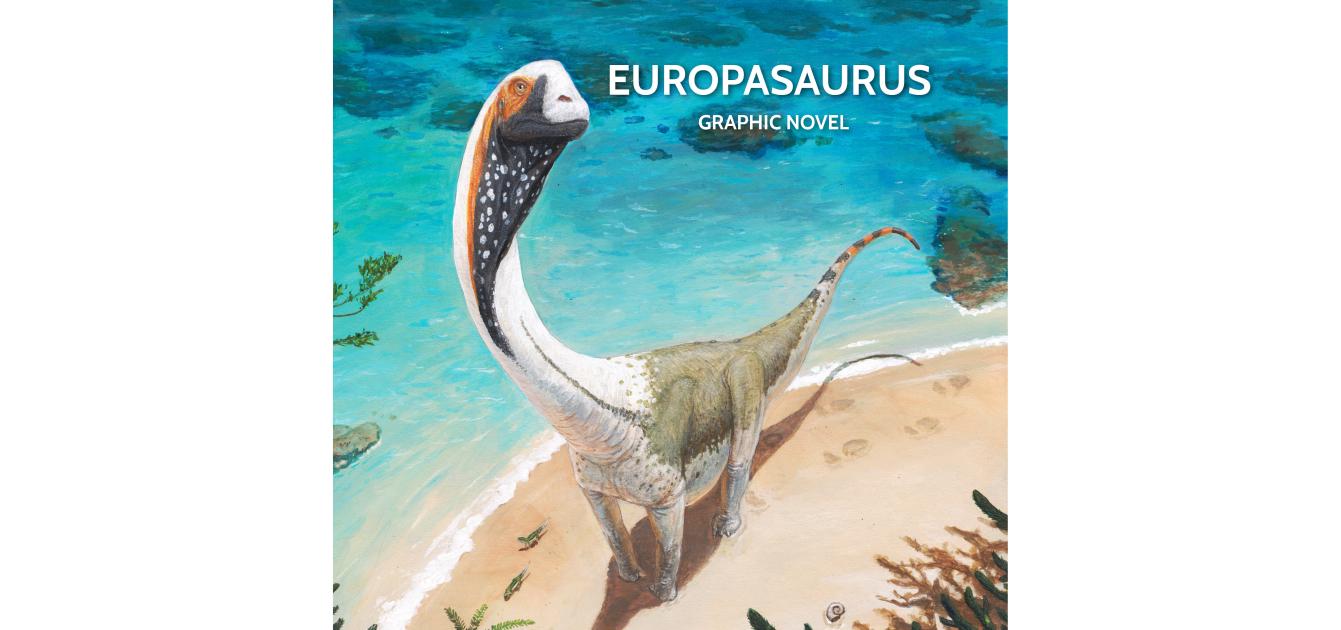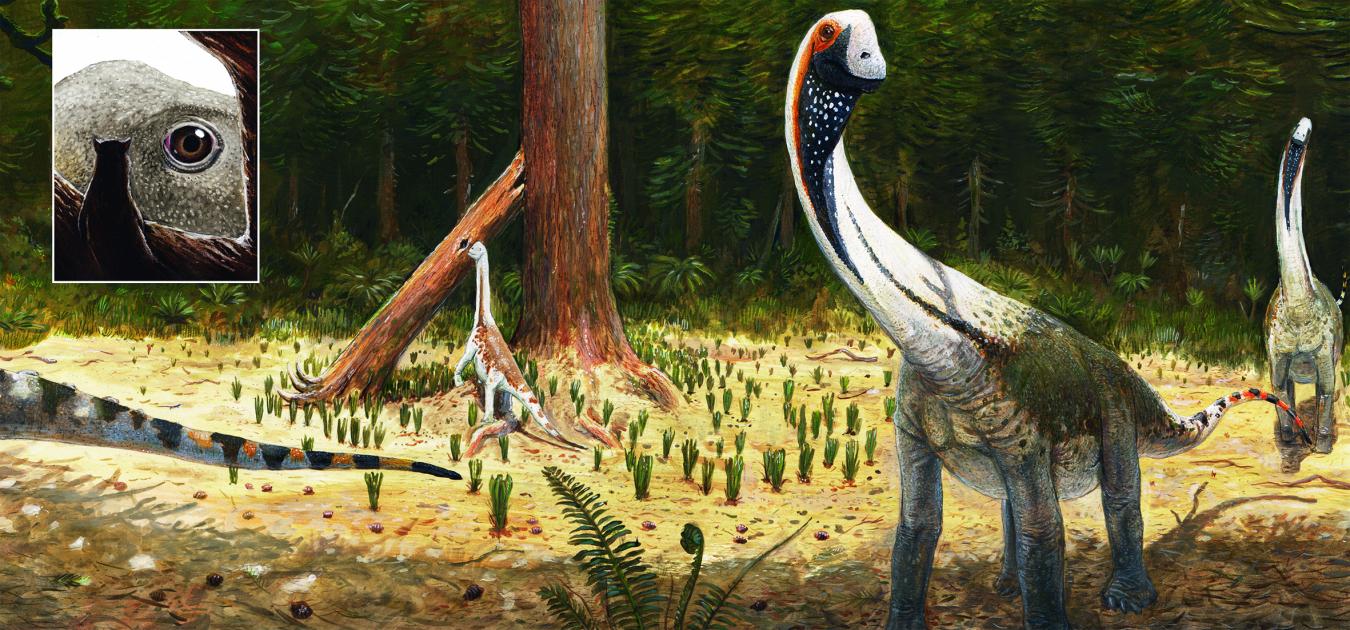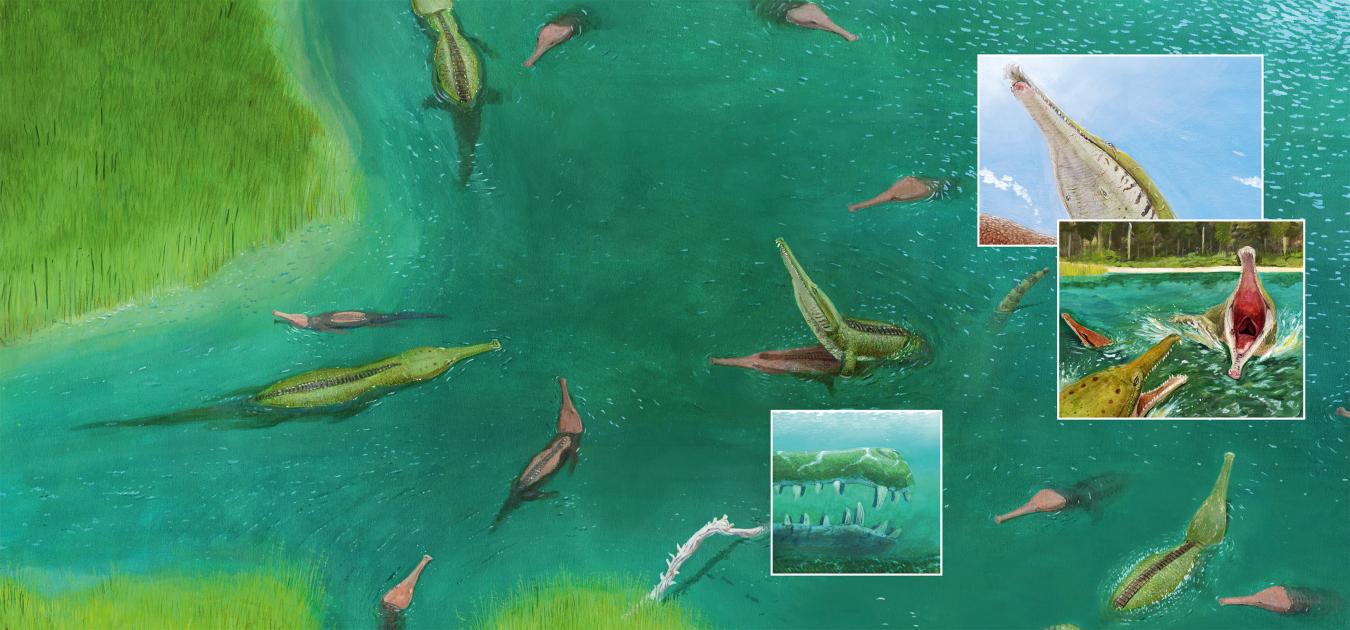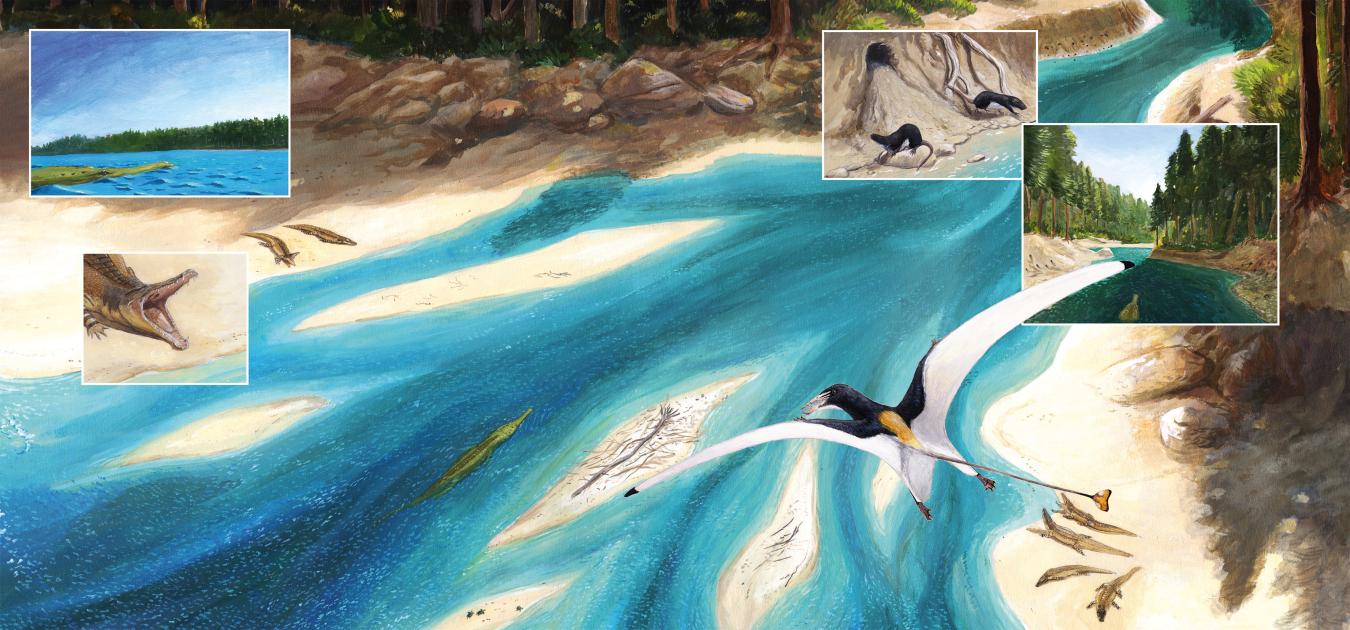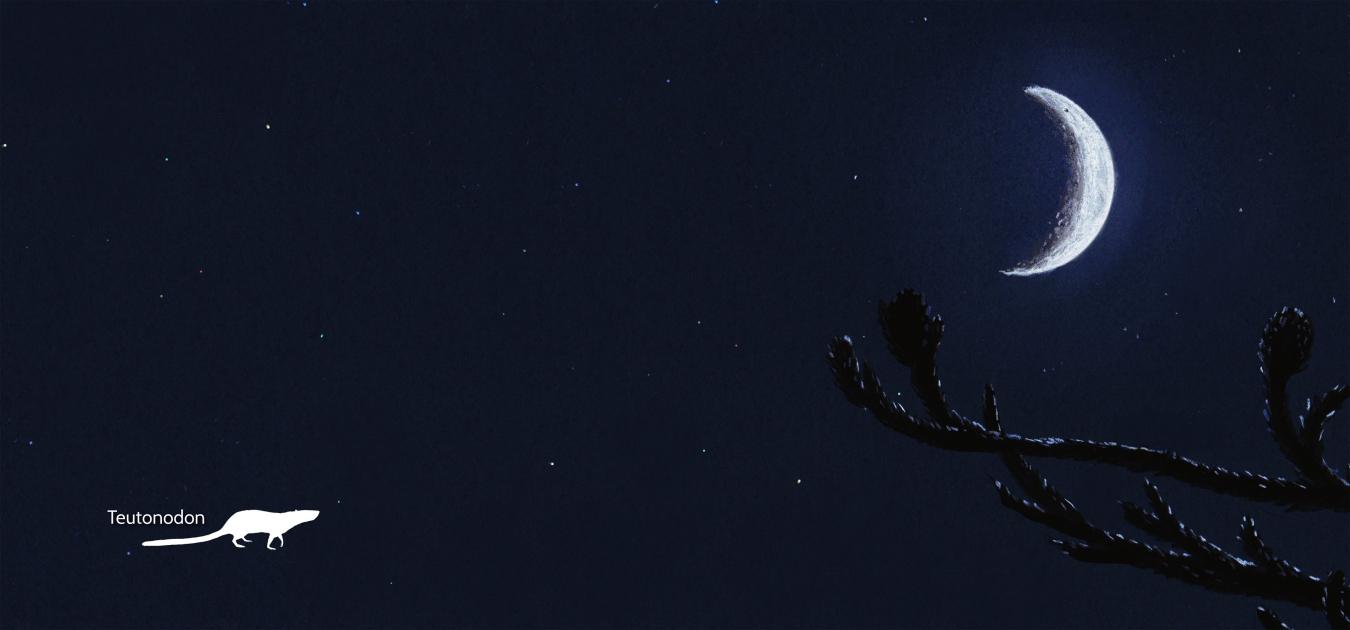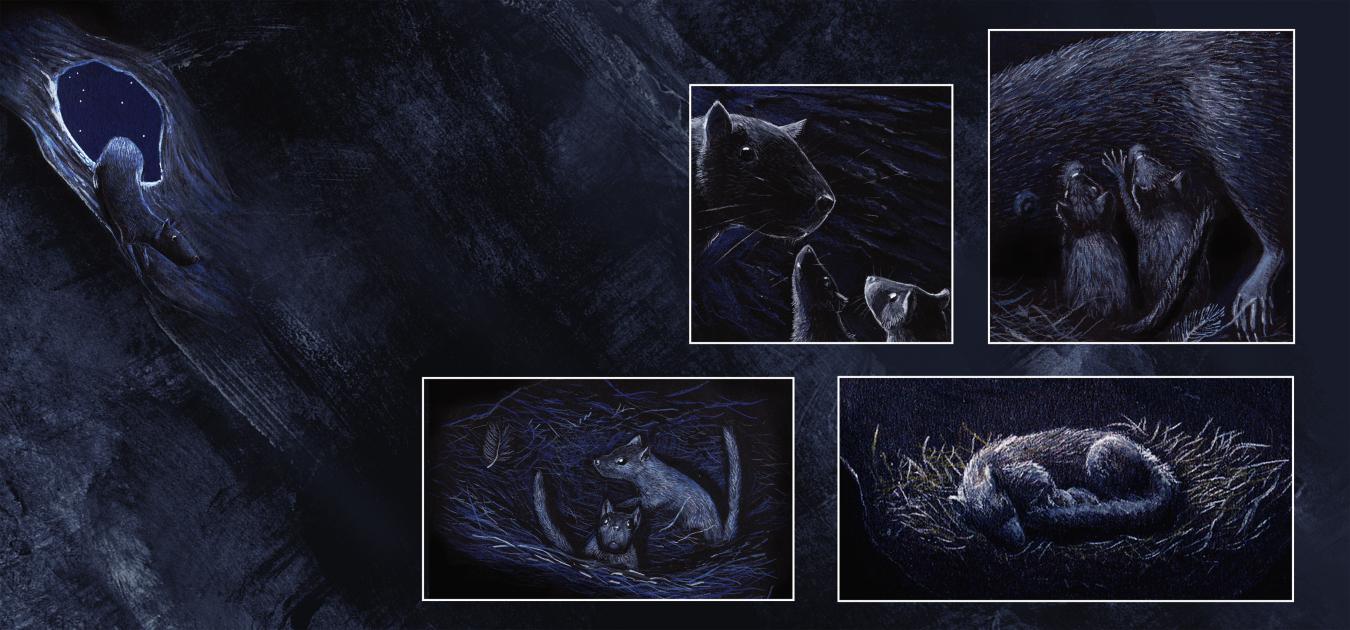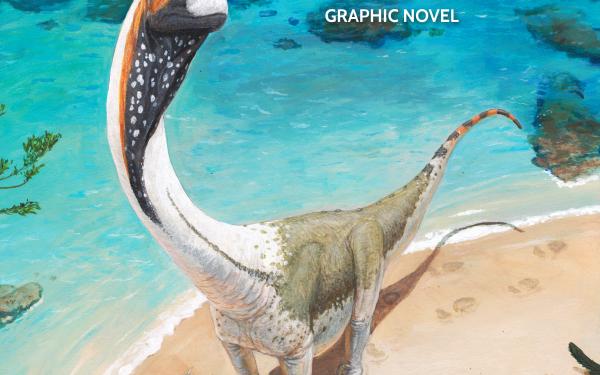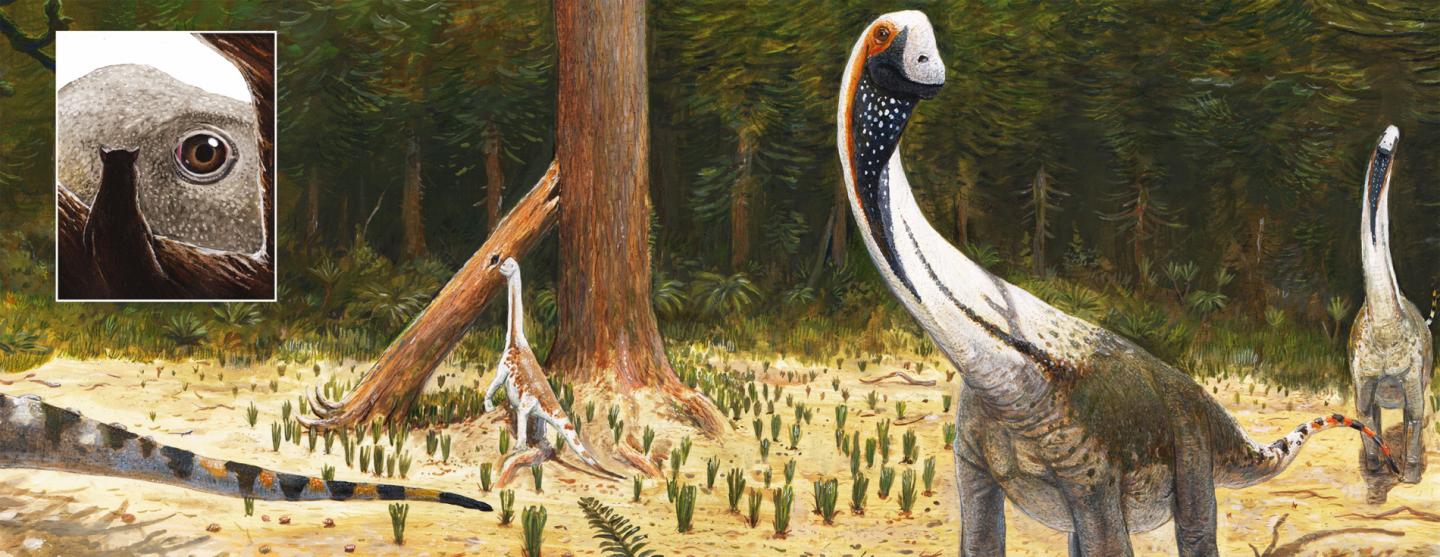
Joschua Knüppe/Dr. Oliver Wings
Europasaurus as a Graphic Novel: Science Done Differently
A dinosaur project funded by the Volkswagen Foundation comes to an end with an unusual approach to communicating its results: A graphic novel based on scientific findings intended to stimulate the imagination of an ecosystem that is 154 million years old.
Jana, 13, from Dusseldorf, finds a website with comic strips from all over the world while surfing the net. The illustrations of dinosaurs immediately spark her imagination: The drawings tell of "small" giant animals called "Europasaurus" and how they lived about 154 million years ago – on an island which today forms part of the Harz Mountains in Lower Saxony. That the website is not about an illustrated fantasy story, but rather the exact reconstruction of a primeval ecosystem according to latest scientific knowledge, only gradually becomes clear to Jana as she reads on.
The curious teenager follows the comic strip to a link that leads her to a 180-page book: A graphic novel that summarizes everything researchers have so far discovered about the European dinosaurs and their environment. The book also tells Jana interesting facts about where the dinosaur bones were discovered and the museums in which they can be seen. But now she wants to find out for herself – and suggests that her parents take her on a trip to Lower Saxony.
As museum researchers, we also have an explicit educational mission.
A New Approach to Science Communication
If this really takes place, then Dr. Oliver Wings will have successfully achieved his goal of providing new access to scientific content. From 2012 to 2016, the geologist headed the paleontologicalEuropasaurus project at the Lower Saxony National Museum Hanover, which was supported by the Volkswagen Foundation in the frame of its "Research in Museums" funding initiative. Through the graphic novel, which is currently in the final development stage, Wings reaches out to completely new target groups with his research results and makes them curious about what science and museums have to offer. For in addition to his actual research, Oliver Wings attaches great importance to the way he communicates his findings: "As museum researchers, we also have an explicit educational mission – but unfortunately there is hardly any time for this alongside our everyday business".

The geologist believes we need a broad, novel approach to public science dissemination – something he finds particularly important when it comes to research on the Europasaurus, since not only experts consider the project to be remarkable. Shortly after the discovery of an unusual tooth and a collection of bones in the Langenberg quarry between Goslar and Bad Harzburg in 1998, it was clear that they belonged to dinosaurs from the group of sauropods, i.e. the gigantic long-necked herbivorous dinosaurs. This is the first time they had been detected in northern Germany. They lived in this Harz region in the Jurassic age – 201-145 million years ago – and were given the name Europasaurus holgeri by their discoverers.
The dwarfing of the giants
In the course of further research, the Europasaurus holgeri found in the Harz Mountains even turned out to be a previously unknown species of dinosaur. "The excellently three-dimensionally preserved bones are among the most important paleontological finds in the world," says geologist Wings. Approximately 3,000 of these were prepared in the past 20 years. They belong to at least 21 animals. The Europasaurus is particularly interesting because it is a "dwarf" giant dinosaur. It had a body length of only six to eight meters and grew to a height of two to three meters. In contrast, many of his contemporary relatives were up to 13 meters high and over 20 meters long. The explanation: "It is probable that because of living on an island, Europasaurus had to make do with less food and subsequently shrank in the course of evolution. Moreover, the simultaneous absence of predatory dinosaurs allowed it to survive in a smaller version," says Oliver Wings.
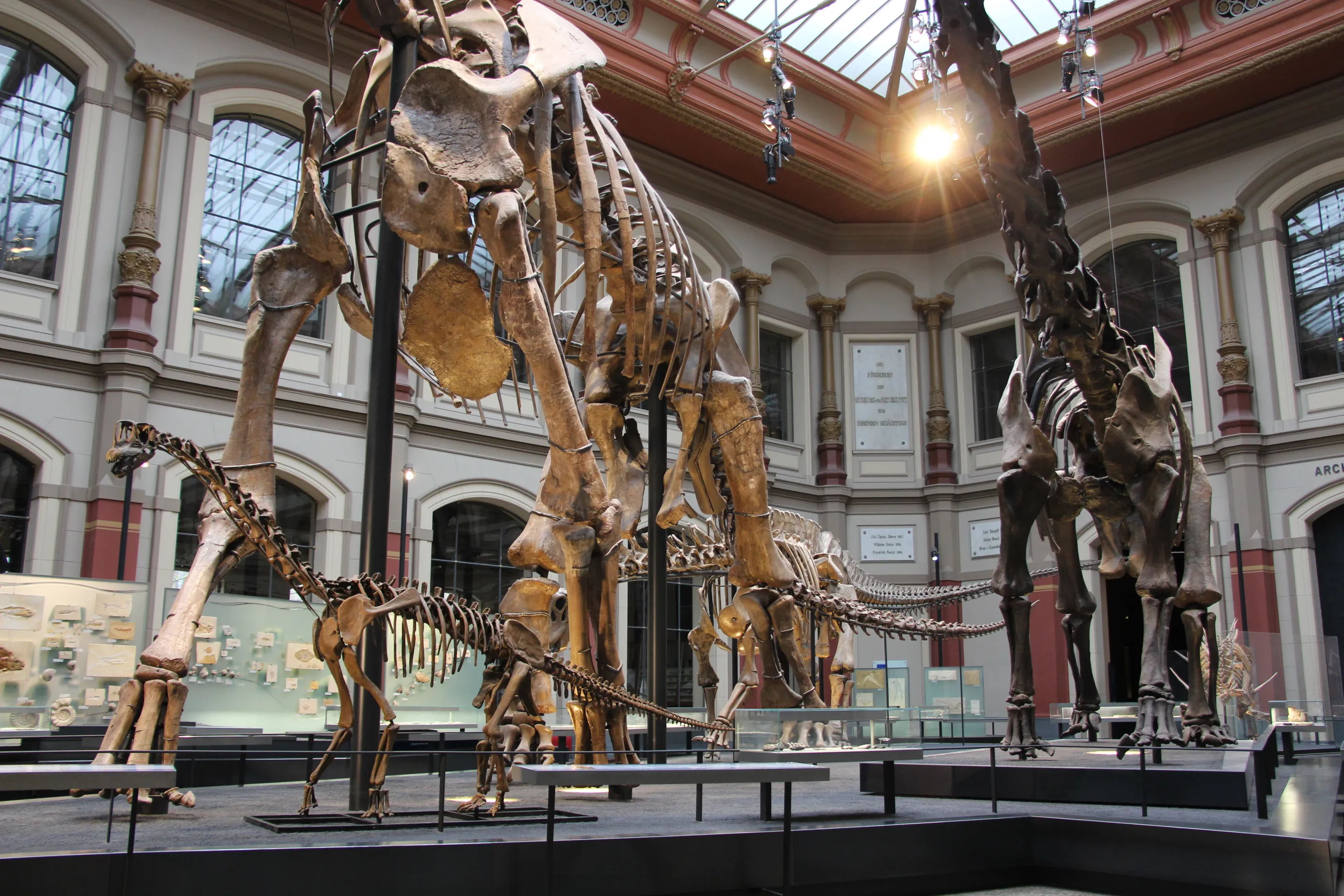
A Europasaurus skeleton (front left), here temporarily in the Museum für Naturkunde Berlin, clearly shows the dwarfing of the sauropod compared to its much larger relatives.
The fact that the finds from the quarry also provided evidence of the first Jurassic mammals in Germany, which apparently lived on the same island as the Europasaurus at the same time, inspires the researcher. Through his graphic novel, Wings wants to share his enthusiasm and above all make these connections understandable to the public.
Illustrations bring facts to life
"Museum visitors are usually absolutely fascinated by such finds," says Wings. "But understanding the significance of 150 million years and what the world looked like back then is beyond people’s imagination". In order to communicate this, it helps to visualize the fact that an island surrounded by a wide shallow sea and with its own special ecosystem used to lie at the site of the find. Not only the results of scientific research are important, but also professionally created, aesthetically pleasing forms of communication.
The graphic novel about the Europasaurus and its ecosystem, which Wings is developing together with the paleo artist Joschua Knüppe from Munster and the media designer Henning Ahlers from Hanover, therefore not only shows illustrations of extinct animals but also tells stories. "When I look at bone finds as a paleontologist, I don't have individual snapshots in my mind's eye, but vivid scenes of how things used to be," says Wings. How did the animals move? What did their environment look like? How did they interact? He also wants to communicate these aspects to laypeople. Demands on the scientific quality of the illustrations and "scenography" are high. It's good, if like Knüppe you have the talent to interpret scientific facts artistically and portray them in an understandable way.
The finished chapters of the graphic novel are checked for plausibility by international experts. In addition, a scholarly section explains the research results. The primeval protagonists of the individual chapters are presented scientifically: What has been found of them, what is known about them? Where do interpretation and imagination come into play? "We only found the teeth of a small number of animals," explains Wings. He doesn't want to hide that.
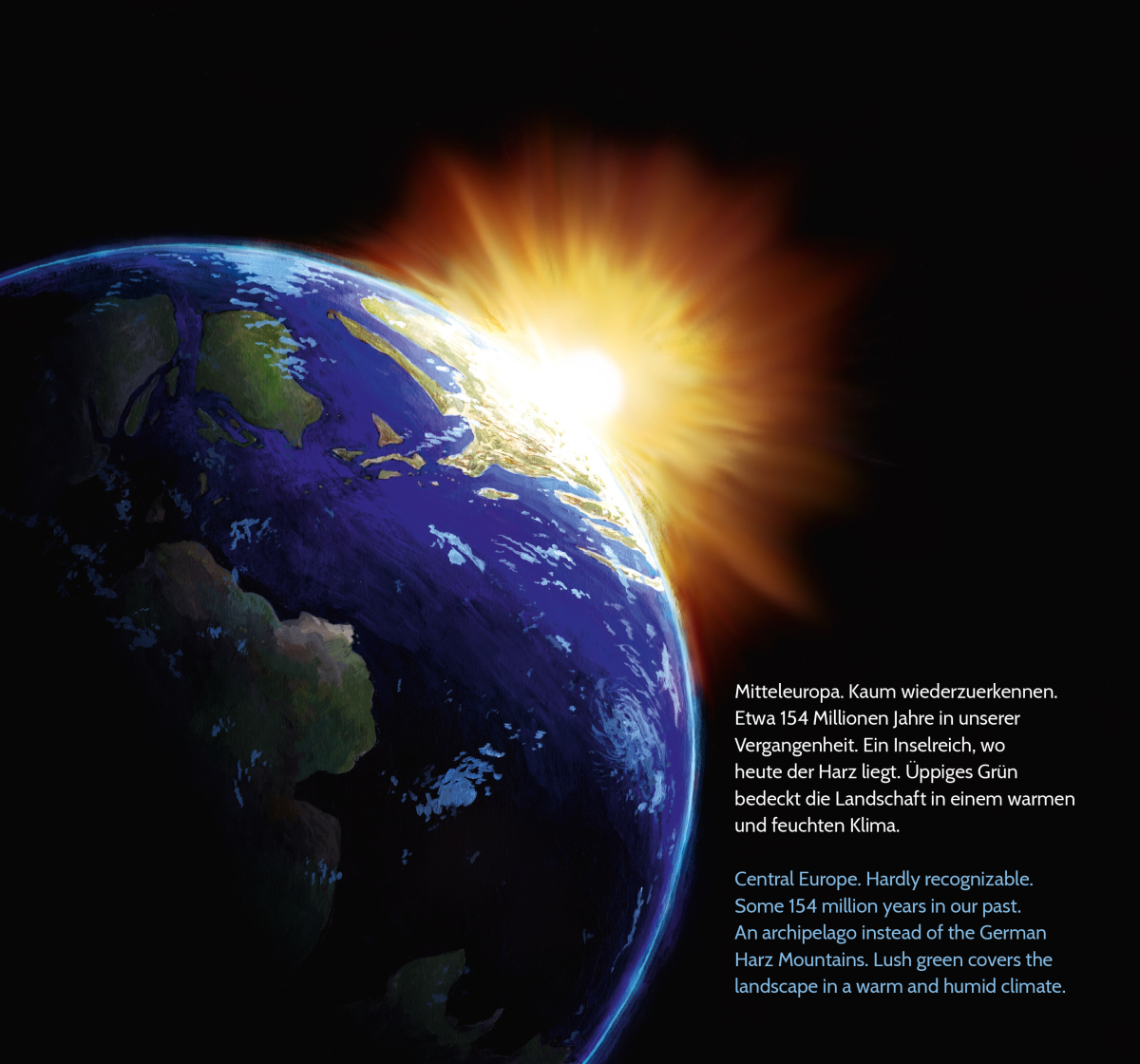
The graphic novel begins with a short piece of text as an introduction. Then the pictures stand alone to tell the story of the dwarf dinosaur.
The publication also sheds light on the geological background, such as plate tectonics and the formation of today's rock strata – and there is a brief introduction to scientific methods. "Of course, a graphic novel also takes some liberties, after all, it's not meant to be a textbook," Wings admits. The individual chapters, which each represent other animals from the researched ecosystem, are visually linked to one another by special features such as a storm or lightning strike. Moreover, the narrative section largely dispenses with text: "We mainly want the images to impact on the reader".
New dissemination media
The pending book is planned to be large-format and printed in high quality; the selling price is to remain below 20 euro. "After all, it’s not first and foremost a commercial product with which we have to earn money," explains Wings. Rather, as a subsidized educational project it should find as wide a readership as possible and be an invitation to experience the fascination of science. As a partner for printing, marketing and distribution, Wings has the Munich science publisher Dr. Friedrich Pfeil on board. "The unusual project is being taken very seriously there," the researcher says happily. It is important to him that parts of the graphic novel are distributed digitally under free license as web comics on social media and as apps, in German and English. Links should point to the book as the core product and to the museum presentations. In addition, an exhibition will show large-format graphics from the book as transmitted light panels. The target group will remain similar: Children from the age of ten, but above all young people who are familiar with pictorial narrative and mobile interaction.
"First of all, the digital distribution is to demonstrate that the product is fun – which will awaken appetite for more," Wings is convinced. Nevertheless, a graphic novel, whether in printed or digital form, cannot replace seeing and experiencing the original find. "For this reason alone, museums will always have their place," says the geologist.
Studying the past of our planet will enable us to develop forecasts about how things will continue in the future.
The graphic novel, as a science communication and marketing instrument, is a pilot project: "We want to stimulate discourse, which necessarily also makes us vulnerable". Some colleagues doubted whether the high expenditure of time would be worth it. Moreover, an artistic representation always dares to a certain extent to leave the realm of exact science. "Every new research done can reveal details that make our work look outdated – but at the moment we are as scientifically acurate as possible," Wings emphasizes.
Dinosaurs as ambassadors
Oliver Wings believes that subjects such as paleontology must find their way into the public eye and illustrate what research means and the value it has for us today. He regrets that "Many professorships in paleontology have disappeared over the past few years because the chairs neglected the importance of lobbying." For him, this is of fundamental concern because "studying the past of our planet will enable us to develop forecasts about how things will continue in the future".
The consideration of long-term perspectives on such complex processes is absolutely vital: How does life react to crises? How do ecosystems react, at what point do they collapse? "We overestimate ourselves as human beings. There is little point in just looking at recent development," says Wings. This is another reason why it is important to arouse people's curiosity and imagination again and again. "Without the popularity of dinosaurs, we and our research would be perceived even less." This is another reason why Wings is convinced that Europasaurus is an excellent ambassador for underscoring the importance of science and paleontology in particular.
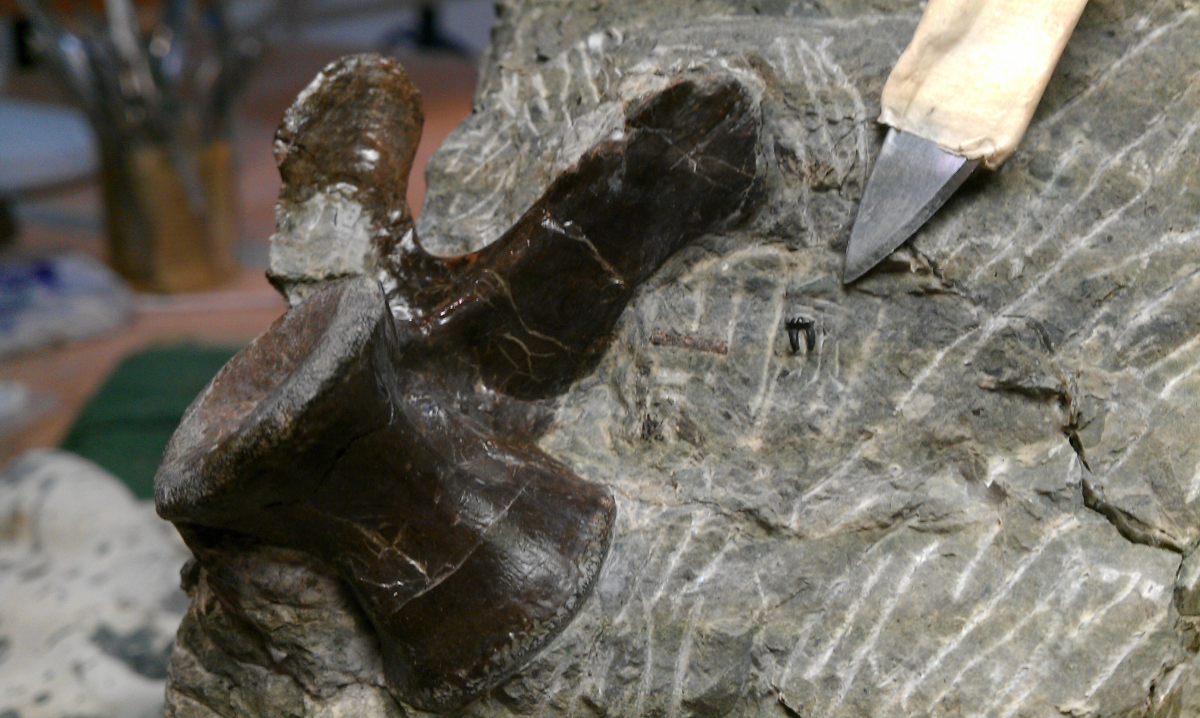
A size comparison of two finds from the Langenberg quarry: A crocodile vertebra and the tiny tooth of one of the first Jurassic mammals to populate Germany.

